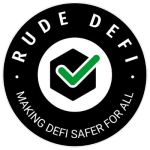Performing a smart contract audit is a crucial step in ensuring the security, reliability, and integrity of a blockchain project. A comprehensive audit helps identify potential vulnerabilities, bugs, and security flaws in the smart contract code, thereby reducing the risk of exploits and protecting users’ funds. Here’s a step-by-step guide on how to perform a smart contract audit effectively:
Understand the Project Requirements
- Gather Project Documentation: Obtain comprehensive documentation about the project, including its objectives, functionality, use cases, and intended audience.
- Review Technical Specifications: Understand the technical architecture, design decisions, and implementation details of the smart contract code.
Define Audit Scope and Objectives
- Identify Smart Contracts: Determine the scope of the audit by identifying all smart contracts associated with the project, including primary contracts, dependencies, and external integrations.
- Define Audit Objectives: Establish clear objectives and goals for the audit, such as identifying security vulnerabilities, ensuring compliance with specifications, and verifying code quality and best practices.
Conduct Code Review
- Review Codebase: Perform a line-by-line review of the smart contract code to identify potential vulnerabilities, logical errors, and coding mistakes.
- Verify Functionality: Ensure that the smart contract code accurately implements the intended functionality and adheres to the project specifications.
- Check for Best Practices: Evaluate the codebase against industry best practices, coding standards, and security guidelines to identify areas for improvement.
Perform Security Analysis
- Identify Vulnerabilities: Conduct security analysis to identify common vulnerabilities and attack vectors, such as reentrancy, integer overflow, denial-of-service, and unauthorized access.
- Use Automated Tools: Utilize automated security analysis tools and static code analyzers to identify potential security vulnerabilities and code smells.
- Manual Testing: Perform manual testing and simulation of various scenarios to identify edge cases and potential security loopholes that may not be detected by automated tools.
Test Deployment and Interactions
- Deploy Test Environments: Set up test environments to deploy smart contracts and simulate real-world interactions, transactions, and scenarios.
- Test Edge Cases: Execute test cases to validate the behavior of smart contracts under different conditions, including boundary cases, error handling, and unexpected inputs.
- Test External Integrations: Verify the interaction of smart contracts with external systems, APIs, or oracles to ensure compatibility and security.
Document Findings and Recommendations
- Document Issues: Record all identified vulnerabilities, bugs, and security weaknesses, along with detailed descriptions, severity ratings, and potential impact.
- Provide Recommendations: Offer actionable recommendations and remediation strategies to address identified issues and improve the security posture of the smart contracts.
Communicate Results and Feedback
- Report Findings: Prepare a comprehensive audit report summarizing the audit findings, observations, recommendations, and insights obtained during the audit process.
- Engage Stakeholders: Communicate the audit results to relevant stakeholders, including the project team, developers, auditors, and users, and address any questions or concerns they may have.
- Facilitate Collaboration: Foster collaboration between the audit team and the project team to facilitate the implementation of recommended changes and improvements.
Follow-Up and Review
- Monitor Implementation: Follow up with the project team to ensure the implementation of recommended changes and improvements based on the audit findings.
- Conduct Periodic Reviews: Schedule periodic reviews and follow-up audits to reassess the security posture of the smart contracts and address any new vulnerabilities or emerging threats.
By following these steps, auditors can conduct a thorough and effective smart contract audit, helping to enhance the security, reliability, and trustworthiness of blockchain projects and protect stakeholders’ interests.







